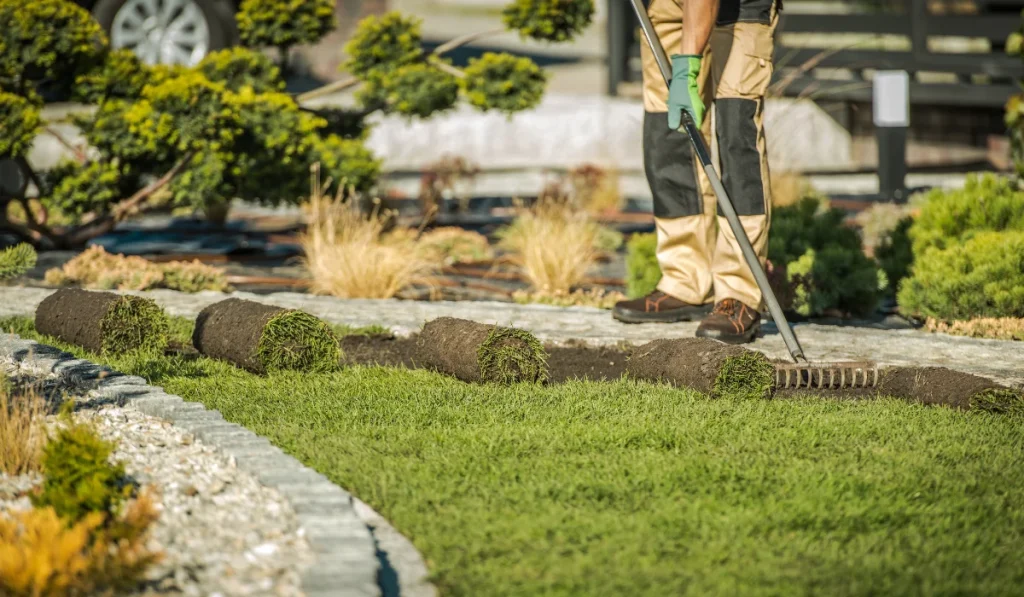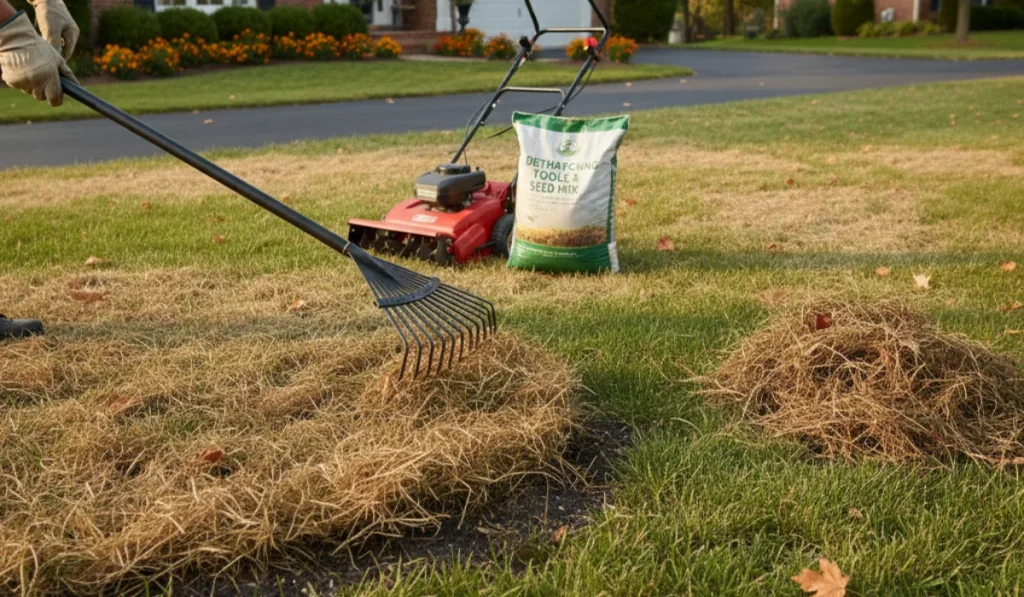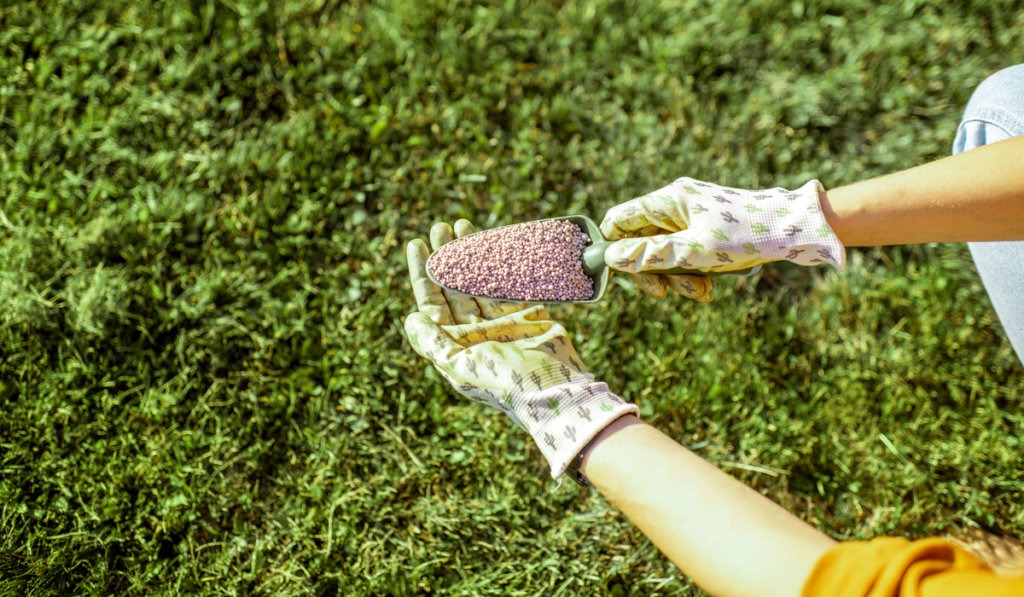Springtime in Southern California brings the perfect opportunity to revitalize your lawn. With a mix of warm-season grasses, cool-season grasses, and unique climate challenges, preparing your yard for the growing season ensures a lush, green lawn that will thrive even as the summer months approach.
Here’s how to set your lawn up for success.
Key Takeaways
- Lawn care begins with cleaning debris, testing soil, and preparing for strong and healthy spring growth.
- Compact soil benefits from aeration, while dethatching, overseeding, and herbicides help prevent weeds and fill bare spots.
- Efficient watering, sharp mower blades, proper mowing height, and targeted fertilization support robust and stress-free grass.
- Mulch improves moisture retention, and consistent maintenance adapts to grass type and seasonal changes for optimal health.
Clean Up Debris and Dead Grass
Start by removing debris like fallen leaves, twigs, and dead grass. This step prevents the suffocation of grass blades and improves air circulation.
Clearing your lawn also reduces the chances of disease and makes it easier for sunlight and water to reach the soil. Collect the debris with a rake and consider composting grass clippings for an eco-friendly solution.
Perform a Soil Test
Healthy lawns start with healthy soil.
A soil test determines pH levels and nutrient needs. Southern California soils often benefit from amendments to improve conditions for root growth.
Based on your test results, you might apply a lawn fertilizer with the necessary nutrients, such as nitrogen or phosphorus. Opt for a slow-release fertilizer to ensure steady nourishment over time.
Aerate and Dethatch
If your soil is compacted, aeration is a must.
This process improves drainage and encourages deep root growth, which is especially important as evaporation increases during the warmer months.
Dethatching removes thatch, a dense layer of dead grass and organic matter that can suffocate your lawn.
Together, these practices improve the soil’s ability to absorb water and nutrients.
Tackle Bare Spots and Overseed
If bare patches have developed over the winter, it’s time to overseed.
Use grass seed suited to your lawn’s type, such as Bermuda grass for warm-season grasses or tall fescue for cool-season grasses.
Overseeding strengthens your lawn’s density and reduces weed growth. Be sure to water the newly seeded areas consistently to support germination.
Sharpen Mower Blades and Adjust Mowing Practices
Check your lawn mower before the mowing season begins. Sharp mower blades are critical for clean cuts that reduce stress on your grass.
Adjust the cutting height based on your grass type:
- Cool-season grasses like Kentucky bluegrass: 1.5–3 inches
- Warm-season grasses like St. Augustine grass: 1.5–2.5 inches
Avoid cutting more than one-third of the grass height in a single mowing session to prevent stress.
Apply Pre-Emergent Herbicides
Crabgrass and other weed seeds begin germinating in early spring, so applying a pre-emergent herbicide is vital for preventing an outbreak.
For existing weeds, use a post-emergent weed killer to target broadleaf weeds. Regular weed control efforts will ensure your lawn remains healthy and free of competition.
Water Efficiently and Consistently
Southern California’s dry climate makes proper watering a top priority.
Give your lawn about an inch of water per week, delivered in deep, infrequent sessions to encourage grass roots to grow deeper. Use a sprinkler or spreader to ensure even distribution.
Watering early in the morning minimizes evaporation, keeping your lawn hydrated while conserving water.
Fertilize Strategically
Spring is an ideal time for fertilizing.
Choose a fertilizer that supports early spring growth and strengthens your lawn for the summer heat. Scotts and other lawn care products offer formulas designed for various grass needs.
Avoid over-fertilizing, which can lead to rapid, weak growth and leave your lawn more vulnerable to stress.
Focus on Weed and Pest Management
Weeds aren’t the only issue to monitor—grubs and other pests can damage grass roots, leading to brown patches or dead grass. Treat infestations promptly with pest control solutions designed for your grass type.
For a more natural approach, consider integrated pest management to minimize harmful compound use while still protecting your lawn.
Add Mulch for Moisture Retention
Apply mulch around flower beds, trees, and other landscaped areas to reduce evaporation and conserve moisture.
Mulch also helps control weeds and adds a finished look to your yard.
Plan for Late Spring Maintenance
As spring progresses, keep up with mowing, watering, and fertilizing to maintain a healthy lawn.
Regularly inspect your yard for signs of stress, such as wilting or yellowing grass blades. Adjust your care routine based on the type of grass and environmental conditions.
For example:
- Warm-season grasses like Zoysia or Bermuda thrive in hotter temperatures and need consistent care during their active growing season.
- Cool-season grasses may need extra attention as they transition out of their peak growing period.
Get Your Lawn Spring-Ready in Southern California
Preparing a lawn for spring in Southern California is easier with the right tools and resources. SodLawn offers top-quality sod, grass seed, and fertilizers to help create and maintain a healthy, vibrant landscape.
Contact us today to explore our range of sod and installation services, and let’s get your lawn spring-ready.
Frequently Asked Questions
What are the best grass types for Southern California lawns?
Southern California’s climate supports warm-season grasses like Bermuda and St. Augustine, which thrive in heat, as well as cool-season grasses like tall fescue for shaded or mixed-sun areas. Select based on sun exposure and maintenance preferences.
How can I prevent overwatering in Southern California’s dry climate?
To prevent overwatering, use a rain gauge or soil moisture sensor to track hydration levels, and water early in the morning to reduce evaporation while ensuring deep root absorption.



